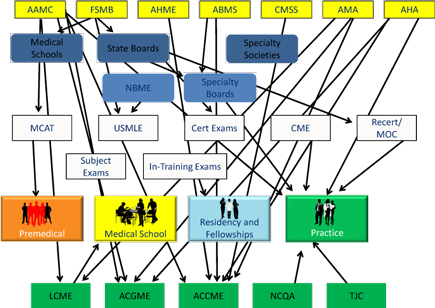Making sense of movement disorders
From uncontrollable urges to move to a struggle to make even basic gestures, movement disorders cover a wide range of problems.
At a session titled “Approach to the Patient with Movement Disorders” at Internal Medicine 2013 in April, Martin A. Samuels, MD, MACP, described one way that he evaluates patients with bradykinesia: He holds a staring contest.
“I compare my eye blink rate to the patient's eye blink rate,” he said. “I watch them blink, then I blink, and then we see who blinks next. And you'll find that these people will win every time.”

Kidding aside, Dr. Samuels, who is the founding chair of the department of neurology at Brigham and Women's Hospital and professor of neurology at Harvard Medical School in Boston, also asked the audience to do an experiment to simulate how a bradykinetic patient feels.
“It's an extremely unpleasant sensation,” he said. He asked everyone to sit without moving, swallowing or blinking for 15 seconds, then listen to all of the “makeup” sounds of shuffling, position shifting and throat clearing when time was up.
His demonstration drove home his point. “The nervous system is meant to move,” he said. “[Bradykinesia] is an active suppression that's happening, which is actually painful and difficult. If you had to do that for a minute or two minutes or five minutes, you would find it extremely uncomfortable.”
The lack of movement characteristic of bradykinesia leads to dry eyes, difficulty swallowing and the need to think about everything you do, including remembering to move your arms when you walk, Dr. Samuels said. It's most easily recognized by simple observation.
“You have to become good at seeing bradykinesia,” he said. “It's subtle when it's early. So you're looking for reduced movements, reduced blinking, these complaints related to not being able to move spontaneously.”
Bradykinesia is synonymous with parkinsonism, but Parkinson's disease is only one cause, Dr. Samuels pointed out. Drugs can induce parkinsonism, and it can develop after encephalopathy. Lewy body disease, multiple system atrophy, progressive supranuclear palsy and cortical basal ganglionic degeneration can also cause it, he noted.
Rigidity
Another movement disorder, rigidity, can be caused by three different kinds of increased tone, Dr. Samuels said: spasticity, lead pipe rigidity and paratonia.
“Spasticity can be very disabling,” he said. “It can be worse than paralysis. Some people who have spinal cord injuries will tell you that their weakness is bad but the spasticity is worse, that the stiffness is so severe that they can't uncross their legs, for example, to do personal hygiene.”
Physicians can detect spasticity by moving the limb quickly, said Dr. Samuels. If you move the limb more slowly, you won't feel the same degree of stiffness, since the disorder is velocity-dependent. He also noted that patients with spasticity will have increased reflexes and Babinski sign, but no wasting of the limb. Baclofen and tizanidine, which act on GABA receptors, can help relieve spasticity without adding to the patients' weakness, Dr. Samuels said.
Lead pipe stiffness, however, has nothing to do with velocity, Dr. Samuels said. It's independent of the speed at which a limb moves and often presents in the neck. “A lot of people attribute this to cervical arthritis, but it's really a movement disorder,” he said.
Paratonia, which is effort-dependent, is a kind of stiffness in which “I push, he pulls,” Dr. Samuels said. For example, if you tell a patient to relax and then you try to move the affected limb, the patient will push you away. The stiffness disappears if you distract the person, Dr. Samuels said.
Paratonia can be due to a lesion in the frontal lobe or can be the result of a patient trying to fake muscle weakness, he said. “I've never met a person who could imitate spasticity or lead pipe stiffness,” he said. “I don't think it can be done.”
Tremor
Tremor, Dr. Samuels said, is defined as an involuntary oscillation around a fulcrum. Tremors can be proximal or distal, and slow enough to count or so fast they can't be counted by the naked eye. To help attendees simplify tremors, Dr. Samuels referred to the classification system developed by the 19th-century neurologist Jean-Martin Charcot, which divided tremors into two main types, those that are obvious in a position of repose (for example, relaxing in a chair) and those that require action.
Tremors that are obvious in repose can get better on action or can get worse, Dr. Samuels said, while those that require action can involve goal-directed action, such as trying to touch something, or antigravity movements that are completely unconscious. Tremors that result from antigravity movements can be normal, that is, enhanced physiological tremors, or can result from disease that runs in families.
“And that's it. That's tremorology,” Dr. Samuels said. “If you know this, you can understand all tremors.”
Myoclonus and asterixis
Dr. Samuels also addressed myoclonus and asterixis, which are caused by synchronous multiple motor-unit firing and emanate from the central nervous system. They are very quick, very asymmetrical and unpredictable, Dr. Samuels said: “With a lot of them, people look like marionettes. They just are jumping all over.”
Asterixis is the exact inverse of myoclonus, Dr. Samuels said: “Most people call it negative myoclonus.” In myoclonus, the limb moves in an antigravity fashion, and with asterixis it drops with gravity.
The two disorders are often seen together, Dr. Samuels noted, and it can be difficult to tell which is which. However, he said, “It doesn't matter, either. They're the same. In neurology, when you have two events, two phenomena, which are exactly the opposite, it's very likely you're looking at the same pathophysiology, with an interposed inhibitory neuron in the spinal cord.”
Dr. Samuels noted that asterixis and myoclonus can be seen with all types of metabolic encephalopathies, as well as pulmonary disease and renal failure. In addition, many drugs, especially opioids and valproic acid, can cause myoclonus and asterixis, so “Round up the usual suspects,” Dr. Samuels said. These disorders are hard to treat, although benzodiazepines can be effective, he noted.
Chorea and ballism
Chorea and ballism involve fast, usually proximal movements, with ballism being the more pronounced of the two. “Ballism is just big chorea,” Dr. Samuels said. They have many potential causes, including drugs, infarcts in the basal ganglia, Huntington's disease and autoimmune disease, such as lupus.
“You can see it pretty easily,” Dr. Samuels said. “It's very obvious in most cases, and if you have people walk it often comes out.” With ballism, he said, a limb “suddenly flings into space,” as if you're throwing a ball or a Frisbee. Chorea can be normal in women during pregnancy, he noted.
Dystonia, athetosis and akathisia
Dystonia and athetosis are characterized by twisting movement and postures, Dr. Samuels said. Athetosis is considered a moving dystonia, while dystonia may be a tardive dyskinesia.
“Almost all real dystonia is caused by genetic disease or known etiologies,” Dr. Samuels said. “If it's very focal you can treat it with botulinum toxin and just weaken the muscles, and if it's generalized you have to use some kind of generalized treatment, drugs. Lately we've been using deep-brain stimulation very successfully for very bad, genetic dystonia.”
Dr. Samuels joked that he's a good example of another movement disorder, akathisia, or the inability to keep still, usually manifested by pacing back and forth. Akathisia is a common tardive dyskinesia and is often part of the Ekbom syndrome, he noted. “If you give neuroleptics, you can make it worse,” he said.
Tics and fasciculation
Dr. Samuels also said that tics are one of his favorite areas to discuss because “it's in the zone of neurology and psychiatry. It's in between the two.” Tics are semivoluntary movements and, unlike with other movement disorders, patients will take responsibility for them, Dr. Samuels said.
“If you say ‘Why are you doing that?’ they say, ‘I do it because I need to.’ It relieves some kind of inner tension. The trouble is [the relief] doesn't last. [The tension] comes back again,” he noted.
Tics are highly associated with obsessive-compulsive disorder, Dr. Samuels said, and very severe cases can often be treated successfully with deep-brain stimulation. “Some of the patients do amazingly well and feel so much better,” he said.
Dr. Samuels also discussed a movement disorder that's not a disorder at all: fasciculation, or muscle twitching.
“The word that you should write in your notes next to the word ‘fasciculation’ is the word ‘normal,’” Dr. Samuels said. “Everybody here has had one.”
Fasciculation, which emanates from the motor unit and is related to cramp, is meaningless when not accompanied by weakness and wasting, Dr. Samuels said. “It's hard to cure something which isn't a disease,” he said. “It isn't our job to stop everything on earth.”
If patients with fasciculation want to try to stop it, they can take quinine or magnesium, and antiepileptic drugs might work, Dr. Samuels said. “But you're really hitting a mosquito with a sledgehammer.”





